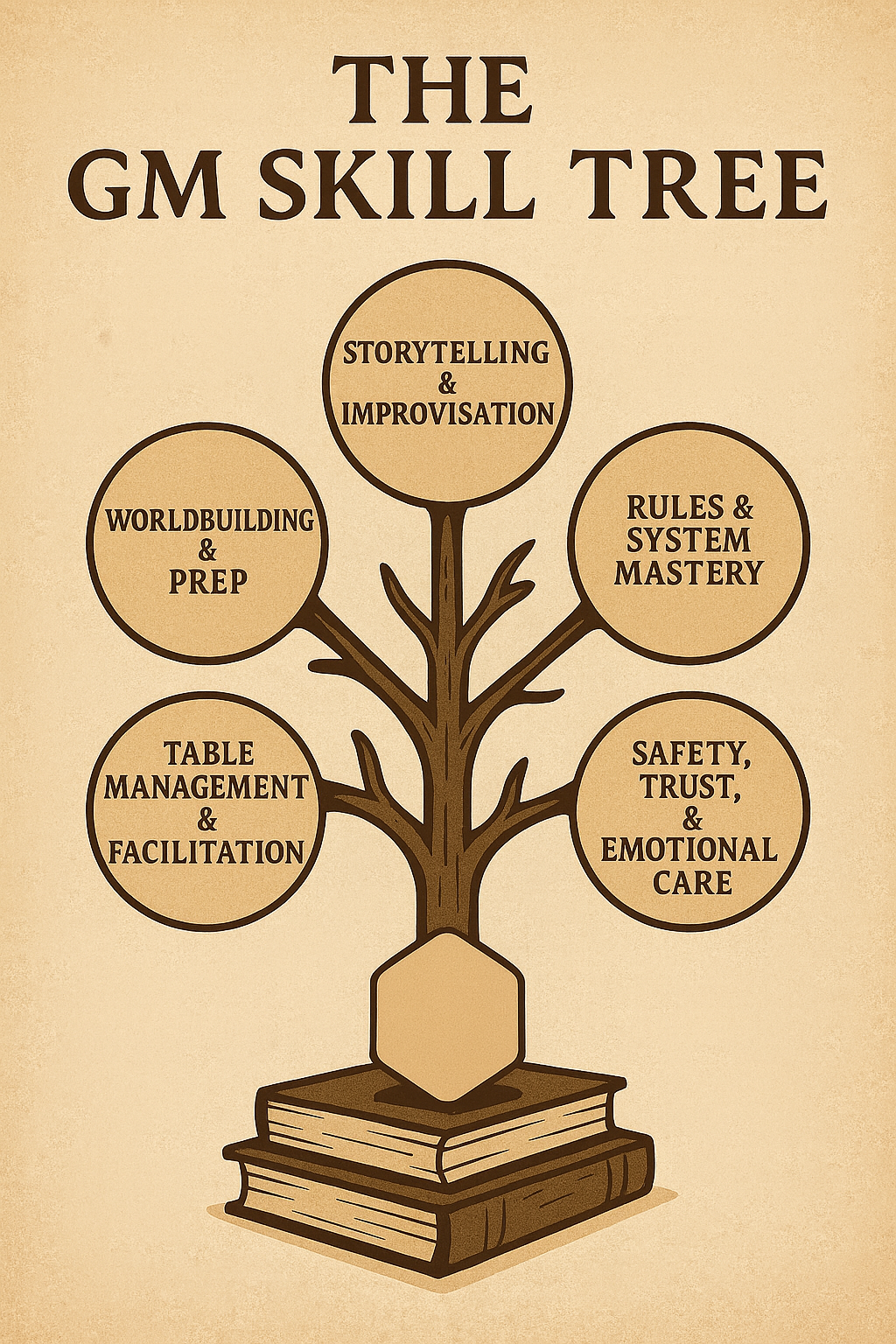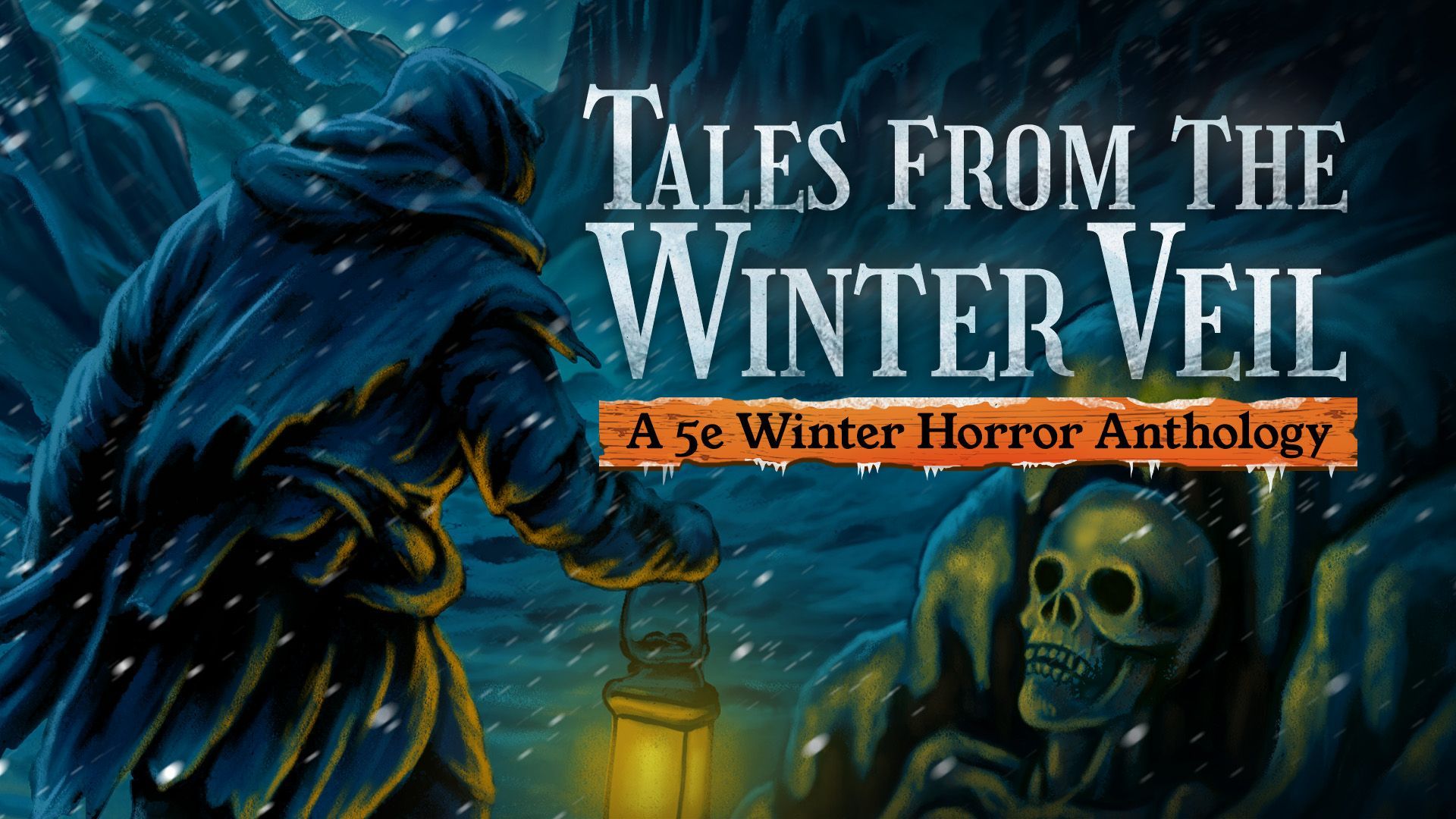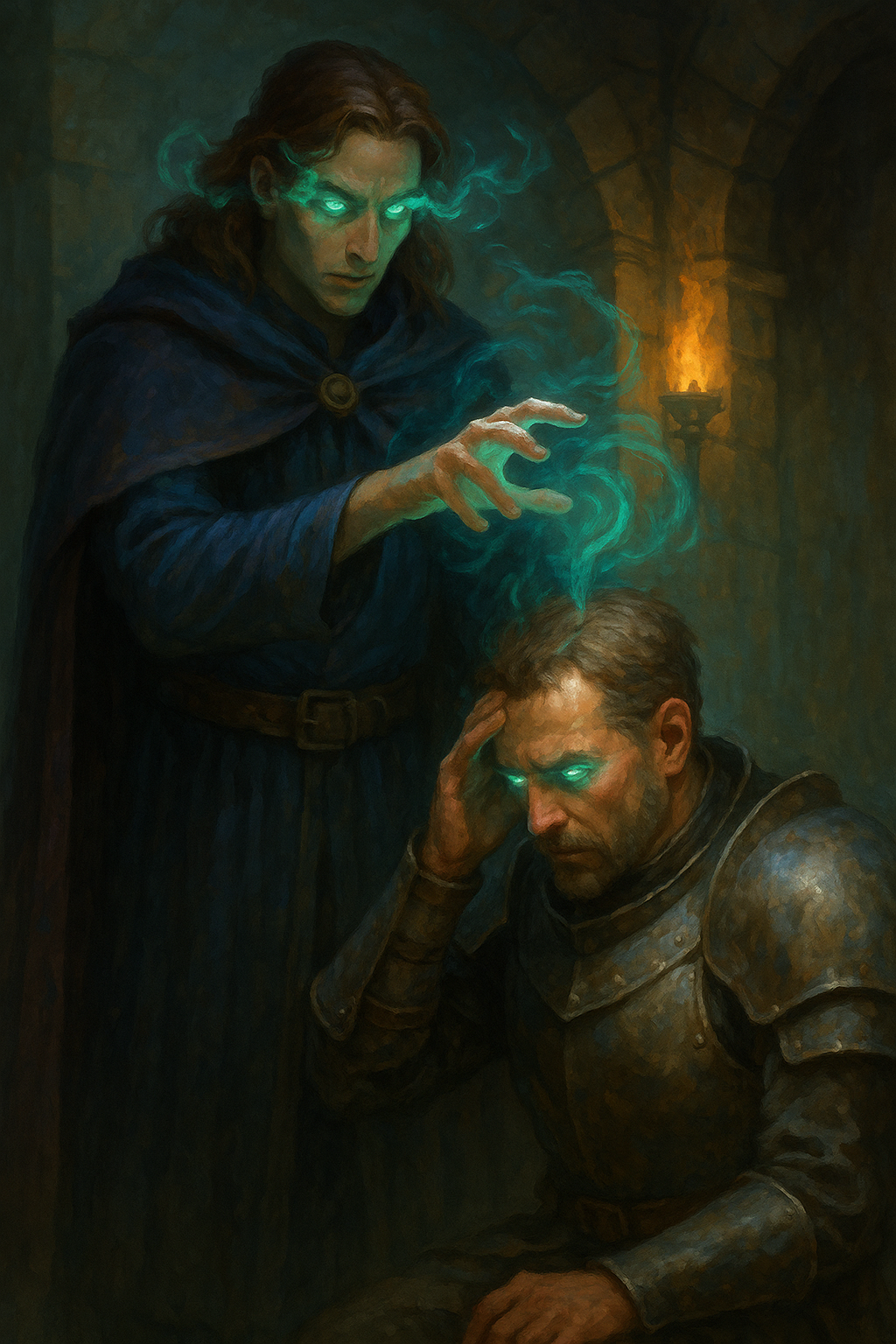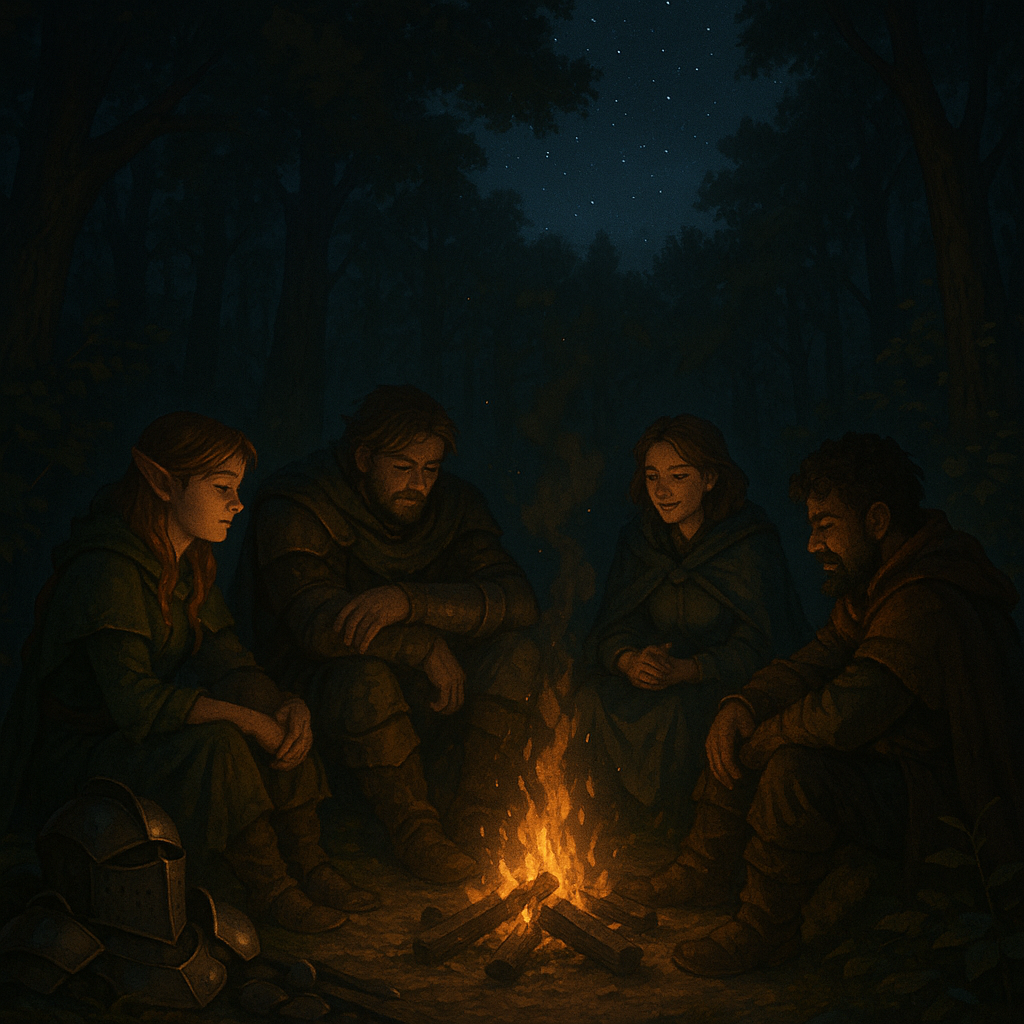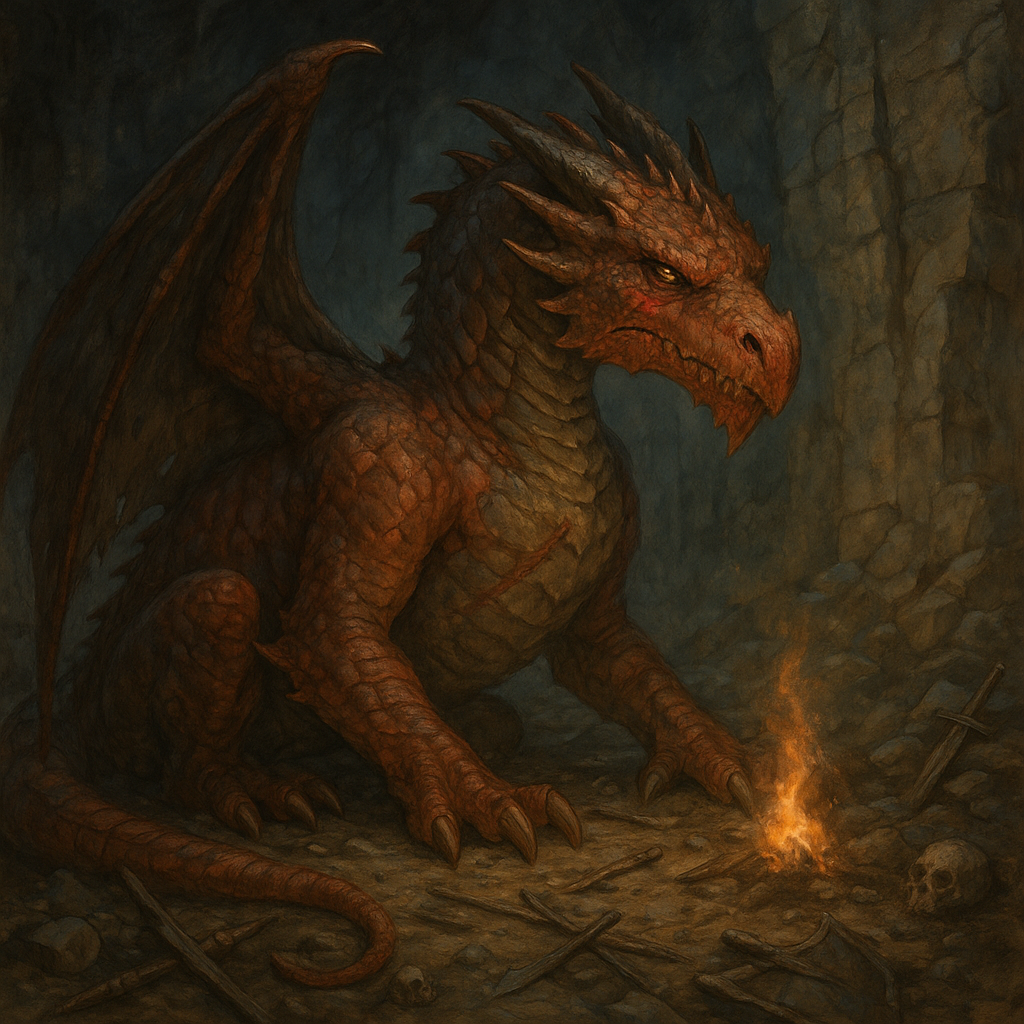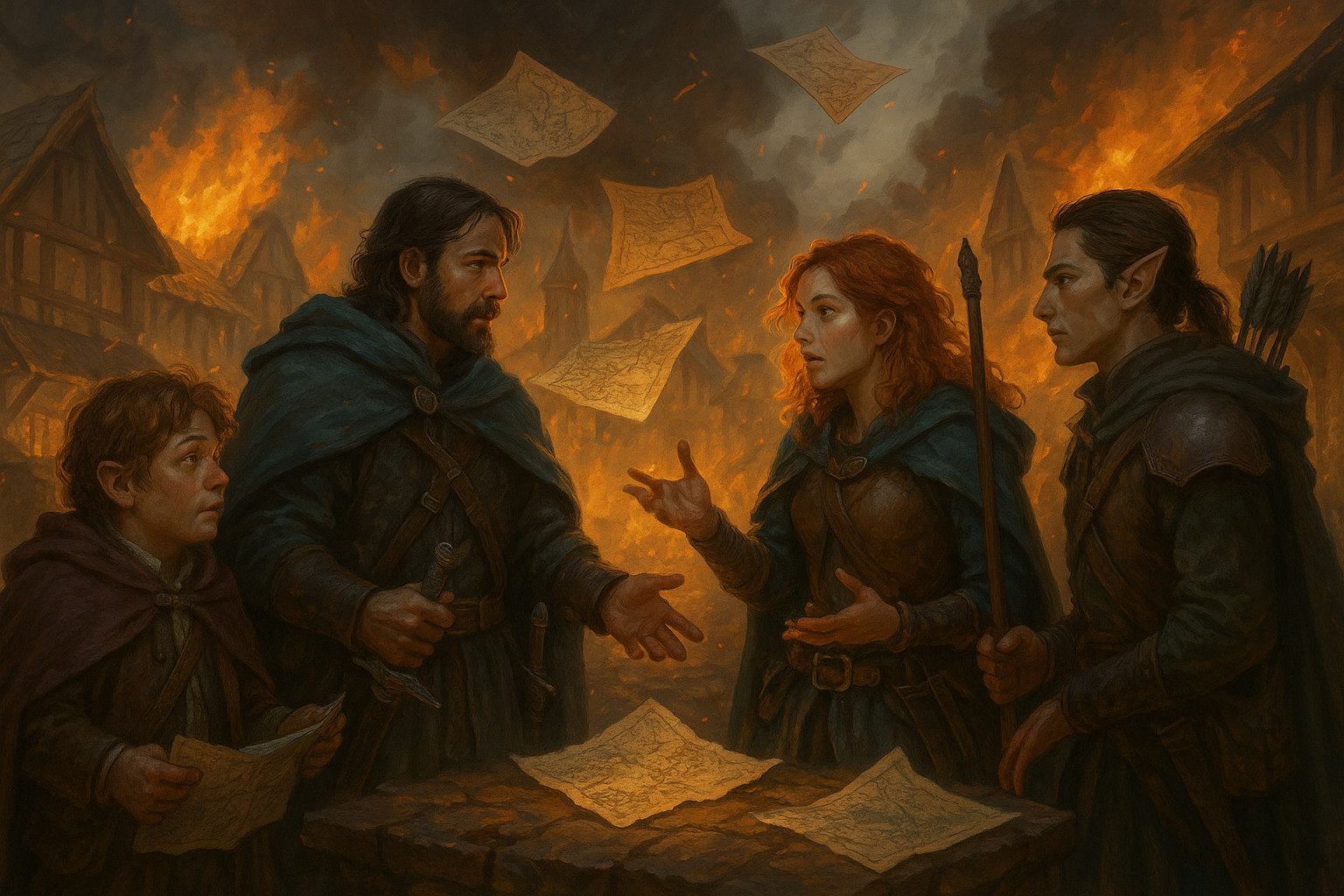Beyond Darkvision: Creative Ways to Handle Lighting in Dungeons
When the party can see in the dark...Well...mostly...
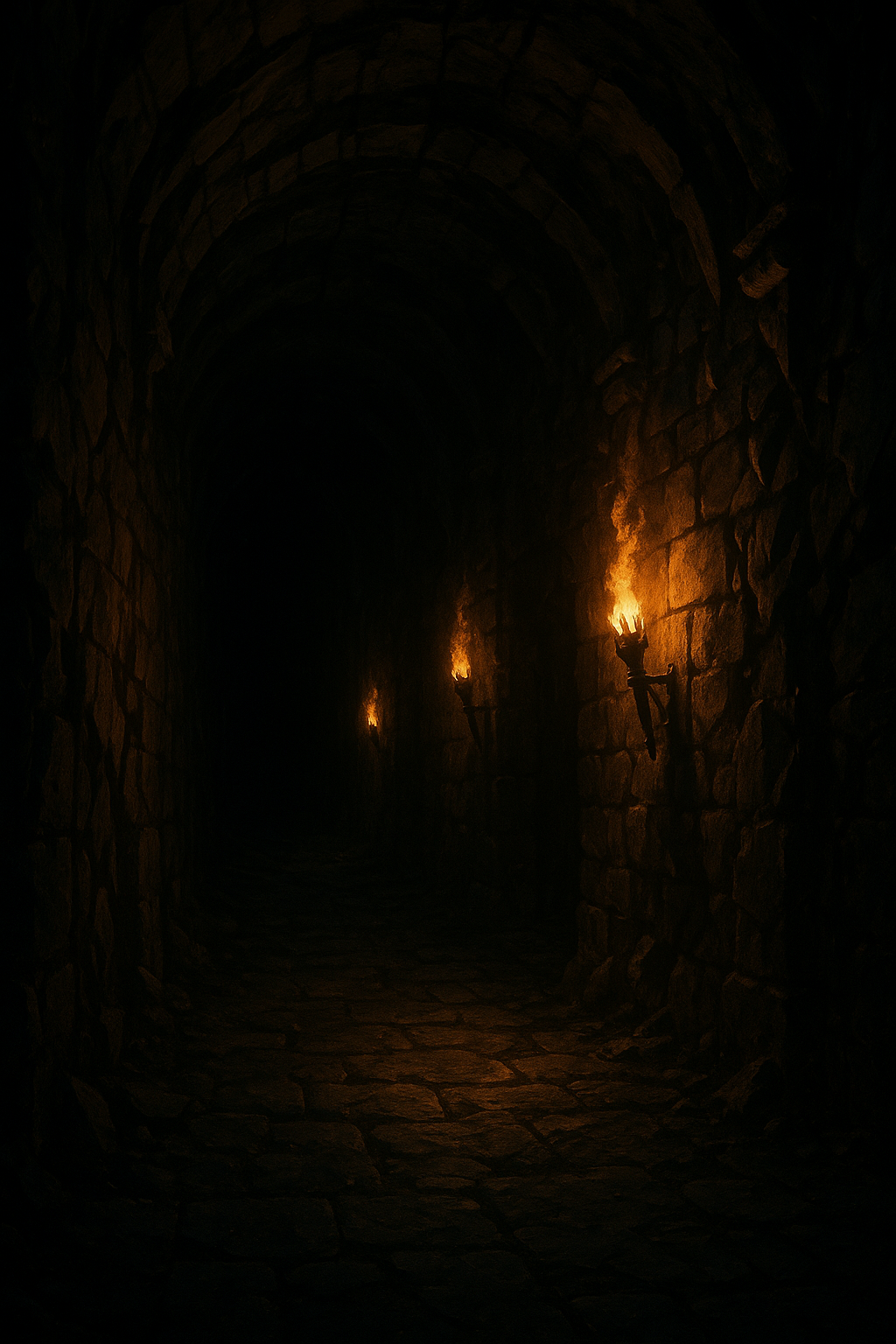
Sorry for the late post...this weekend was a fun-filled trip into what I can only say is the largest and best Renaissance Festival I've ever heard of, let alone been in. I've been wiped for the last two days as a result.
Dear Readers,
Most Dungeons & Dragons players know the refrain: “I’ve got darkvision.” In fifth edition especially, it’s practically a meme—many races come with it baked in. This has led to a generation of dungeons that are lit up like Christmas trees or hand-waved as “everyone can see anyway.” Yet darkness is one of the most powerful tools a Dungeon Master (DM) can use to shape atmosphere, pacing, tactics, and storytelling. Done well, light and darkness can be more than a rules mechanic—they can become an unforgettable part of your campaign.
Today, let’s go beyond darkvision. We’ll explore a toolkit of creative ways to handle lighting in your dungeons, narratively, mechanically, and cinematically. You’ll see how shadows can enhance exploration, ramp up tension, and bring your world alive in ways no number of goblins ever could.
Section 1: Understanding the Core Rules (and Their Limits)
Darkvision allows creatures to see in dim light as if it were bright light and in darkness as if it were dim light, typically up to 60 feet. But it comes with limits: creatures only see in shades of gray and can’t discern color. Additionally, true darkness, especially magical darkness, still foils darkvision.
Why This Matters
When everyone at the table believes darkvision makes them immune to darkness, your dungeons lose a key element of danger. But the rules actually leave room for DMs to reintroduce uncertainty. Players rarely think about depth perception, peripheral vision, or subtle color clues, all of which vanish in grayscale.
Gray Does Not Equal Clear
Make sure to narrate what characters with darkvision actually perceive: muted shapes, blurred edges, and indistinct depth. A pit might blend into the floor. A trap trigger could be invisible. In short: if it’s color-coded or relies on subtle differences, it’s harder to spot.
Section 2: Atmosphere Before Mechanics
Darkness isn’t just a rules challenge—it’s an opportunity for immersion. Describe what the characters feel:
- Smells: Damp stone, fungal spores, acrid sulfur.
- Sounds: Water dripping, faint echoes, a scurrying rat.
- Tactile cues: Cool air currents, uneven flooring, or a wall slick with moss.
When light is scarce, players rely on their imaginations—and you as the DM can supply those sensory cues to elevate tension.
“Show, Don’t Tell” Darkness
Instead of “It’s dark,” say:
“The corridor ahead swallows the torchlight after only a few paces. Beyond that, shapes are merely suggestions—jagged edges like broken teeth framing a mouth of stone.”
By using evocative description, you remind players that darkness is a living part of the dungeon.
Section 3: Vary the Light Sources
One of the simplest ways to make lighting matter again is to diversify how it’s provided. Here are some options:
3.1. Limited-Fuel Torches
Classic D&D assumes a torch lasts one hour. Stick to that. Tracking resources—like food, water, and light—adds tension without much bookkeeping. When the last torch sputters, players feel it.
3.2. Glowworms and Bioluminescence
Underground ecosystems can glow faintly—think Avatar’s Pandora or deep-sea vents. Offer soft blue or green light in patches. This can create eerie pools of visibility and pockets of shadow.
3.3. Magical Lanterns with Quirks
Introduce lanterns that flicker with each lie told nearby, or cast no shadow, or project an illusory scene. Make light a story hook, not just a tool.
3.4. Fire Hazards
Open flames can ignite gas pockets, dry webs, or ancient tapestries. Suddenly the players must weigh risk versus reward when lighting that torch.
Section 4: Challenge Darkvision Creatively
Darkvision shouldn’t be an on/off switch for dungeon lighting. Consider these tactics:
4.1. Bright Light Traps
Creatures adapted to darkness may find sudden bright light disorienting. Flashbang traps, glowing runes, or prisms can blind or confuse them.
4.2. Color-Coded Puzzles
Use puzzles where color matters—like arranging gems by hue or spotting which rune glows red rather than green. Darkvision won’t show the difference, forcing the party to bring light.
4.3. Depth Illusions
A chasm with black water at the bottom may appear as solid ground under darkvision. Make players test Perception or Investigation to avoid stepping into the void.
4.4. Magical Darkness Zones
Spells like Darkness or environmental effects can create regions impenetrable to darkvision. Layer them strategically so light sources or magical solutions become necessary.
Section 5: Lighting as Encounter Design
Lighting can define combat tactics and stealth just as terrain does. Here’s how:
5.1. Vision Bands
Think of light in concentric rings. Bright light, dim light, darkness. Different creatures gain or lose advantages depending on where they stand. This encourages movement and positioning.
5.2. Shadow Stalkers
Monsters with abilities that trigger in dim light—such as teleporting between shadows—force players to fight for control of illumination.
5.3. Dynamic Light Changes
A battle in a fungus-lit cavern could start bright but dim as creatures shriek and retreat, releasing spores that blot out bioluminescence. The environment shifts mid-combat.
5.4. Player-Controlled Lighting
Allow players to interact with braziers, arcane sconces, or magical crystals. Turning lights on or off changes the battlefield like flipping terrain tiles.
Section 6: Storytelling with Light and Shadow
Lighting isn’t just about seeing—it’s about storytelling.
6.1. Symbolism and Mood
Use light color and intensity to signal themes: warm amber for safety, cold blue for danger, flickering violet for corruption. Players learn to read the dungeon’s “lighting language.”
6.2. Foreshadowing with Shadows
Show silhouettes of monsters around corners or behind curtains. Players imagine something larger and scarier than reality, amplifying tension.
6.3. Revealing Backstory
Ancient murals only visible under specific wavelengths (magical UV) or runes that glow when sprinkled with dragon’s blood—light can literally reveal the past.
6.4. Dynamic Shadow Play
Trick the party with illusions, like shadows moving against the light or figures that disappear when approached. Lighting becomes a puzzle itself.
Section 7: Player Buy-In: Making Light Management Fun
All these ideas work best if players embrace them. Here’s how to make them excited instead of annoyed.
7.1. Offer Choices
Provide multiple lighting options—torches, lanterns, driftglobes, enchanted candles—each with pros and cons. Let players choose their style.
7.2. Reward Clever Lighting Tactics
Give inspiration or small mechanical bonuses when players use light creatively: signaling allies, blinding foes, or luring monsters into illuminated kill zones.
7.3. Make It a Mini-Game
Use tokens on the table to represent pools of light. Shift them as characters move or time passes. Seeing it visually helps players engage.
7.4. Safety Nets
If players forget light entirely, don’t punish them with total frustration. Instead, use progressive tension: disadvantage on Perception first, then on attacks, then risk of ambush.
Section 8: Examples of Themed Dungeons with Distinct Lighting
Here are three sample dungeon “lighting profiles” you can borrow or adapt.
8.1. The Verdant Maw (Bioluminescent Jungle Cavern)
- Light: Soft green glow from moss; pulsing mushrooms emit brighter flashes when stepped on.
- Challenge: Creatures evolved to see the flashes as prey movement. PCs risk drawing them.
- Puzzle: Paths marked by rare blue spores invisible under darkvision. Must carry a flame or magical light.
8.2. The Clockwork Abyss (Industrial Mine)
- Light: Sparse oil lamps connected to pressure sensors. Moving too quickly extinguishes them.
- Challenge: Shadows of machinery obscure hazards. Monsters use the darkness to ambush.
- Puzzle: Gears marked with color coding; players must light the right sequence to open the gate.
8.3. The Cathedral of the Eclipse (Fallen Temple)
- Light: A supernatural orb alternates between radiant light and inky darkness every 10 minutes.
- Challenge: When darkness falls, undead surge from hidden niches.
- Puzzle: Use mirrors to redirect the radiant phase to sanctify altars, weakening undead.
Section 9: Integrating Lighting with Other Mechanics
9.1. Stealth and Perception
Dim light imposes disadvantage on Perception relying on sight. Combine with environmental noise or scent to create layered stealth challenges.
9.2. Exhaustion and Morale
Long periods in low light can sap morale or cause hallucinations. Introduce optional mechanics for mental fatigue if players go torchless for too long.
9.3. Environmental Hazards
Heat from torches could trigger air pockets or melt ice bridges. Magical lights could awaken dormant wards.
9.4. Vision Beyond Sight
Offer alternatives: echolocation, tremorsense, or magic items that map the area mentally. This reframes the lighting game and creates cool narrative moments.
Section 10: Magic Items That Reinvent Light
Here’s a small treasure trove of original concepts:
- Lantern of Memory: Projects the last scene it illuminated as a ghostly replay.
- Torch of the Bound Flame: Burns forever but shrinks one inch per lie told in its light.
- Prism of Color Sight: Splits light into revealing beams, allowing darkvision creatures to see color within its area.
- Wisp Jar: Captures a will-o’-wisp to provide flickering blue illumination—and occasional eerie whispers.
- Candle of Forgetting: Burns away memories of the last hour for anyone in its glow when snuffed out.
These items make lighting part of the loot economy—another reason for players to care.
Section 11: Tools for Online or VTT Play
Lighting can be even more striking on virtual tabletops (VTTs) like Roll20, Foundry, or Fantasy Grounds.
11.1. Dynamic Lighting Layers
Use fog of war, line of sight, and dynamic lighting to restrict player vision. They’ll see only what their tokens illuminate.
11.2. Color Filters
Apply subtle color filters for mood—deep blue for cursed zones, orange for lava tubes, violet for eldritch corridors.
11.3. Pulsing or Animated Lights
Set up slow pulsing glows to simulate flickering torches or magical hum. Movement attracts player attention and raises tension.
11.4. Pre-Rendered Maps with Lighting Effects
Use pre-baked shadows and highlights on your maps to convey depth and atmosphere even if your VTT doesn’t support dynamic lighting.
Section 12: Real-World Inspiration for Dungeon Lighting
12.1. Mines and Tunnels
Research real mines—lighting is sparse, localized, and often colored by minerals or lantern glass.
12.2. Catacombs and Crypts
Torch soot darkens ceilings, making them “eat” light. Alcoves hide shapes until you’re close.
12.3. Gothic Cathedrals
Colored glass filters sunlight into kaleidoscopic patterns. Imagine a dungeon where magical “stained glass” shapes the battlefield with radiant beams.
12.4. Modern Caving Practices
Glowsticks, headlamps, reflective markers—all these can inspire magical analogs in fantasy settings.
Section 13: Running the First “Lighting-Heavy” Session
Step 1: Brief the Players
Explain that lighting will matter more than usual. Give them a handout or quick summary of mechanics.
Step 2: Provide Starter Gear
Don’t let a single missing torch ruin the session. Provide a few options up front so players feel empowered.
Step 3: Use Incremental Difficulty
Start with subtle challenges—disadvantage on Perception or stealthy monsters. Later introduce color puzzles or magical darkness.
Step 4: Offer Rewards for Engagement
Tie treasure, lore, or mechanical bonuses to clever lighting use. Players will buy in when they see it pays off.
Section 14: Common Pitfalls and How to Avoid Them
Pitfall 1: Overly Punitive Darkness
If every encounter becomes a slog, players resent it. Balance tension with payoff.
Pitfall 2: Forgetting Non-Visual Senses
Darkness heightens hearing and smell. Use these to give clues, not just to hide them.
Pitfall 3: Losing Track of Light Sources
Keep a simple tracker or use tokens to avoid confusion about who’s carrying what.
Pitfall 4: Ignoring Player Creativity
Players may invent clever ways to produce light—let them! Reward ingenuity with partial success or novel effects.
Section 15: Advanced Mechanics for Hardcore Groups
For groups who love crunch, you can implement optional rules:
- Light Intensity Scale: Bright, Standard, Dim, Pitch Black—each with specific Perception DC modifiers.
- Flame Quality: Cheap torches sputter, high-grade lantern oil burns steady.
- Shadow Stealth: Certain creatures gain stealth bonuses proportional to the number of adjacent dark squares.
- Photophobia/Photosensitivity: Some races suffer penalties in bright light, encouraging them to douse torches strategically.
These mechanics turn light into a tactical currency akin to hit points or spell slots.
Section 16: Bringing It All Together
Lighting is not an obstacle to be hand-waved; it’s a storytelling ally. When you reclaim darkness from the monotony of “everyone has darkvision,” you create opportunities for:
- Tense exploration where every flicker matters.
- Cinematic combat where shadows shift the battlefield.
- Richer puzzles and lore hidden under the right illumination.
- Memorable stories your players will retell for years.
Your Next Steps
- Audit your next dungeon: where is it dark? Where is it lit?
- Plan one puzzle or hazard that relies on light.
- Introduce a unique light source as treasure.
- Describe darkness with more than “it’s dark.”
By layering these approaches, you’ll elevate your games beyond the routine and into the realm of immersive storytelling.
Until next time, Dear Readers…
P.S. - We have a winner on our Dice Giveaway! A big congratulations to Ms. Rachel Bardsley!

















